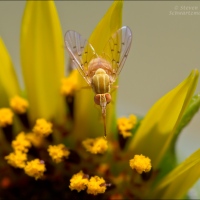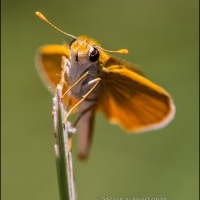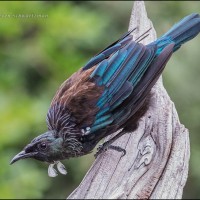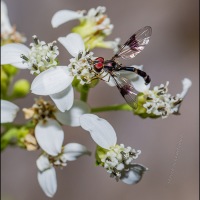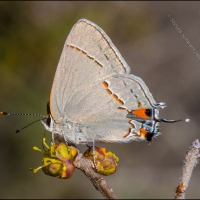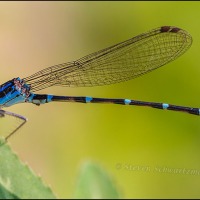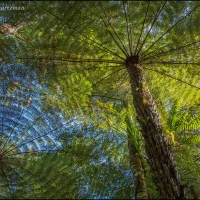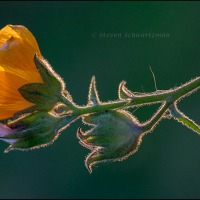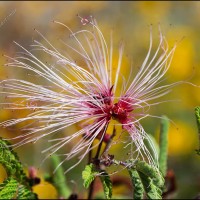Posts Tagged ‘autumn’
Channeling
At the Riata Trace Pond on December 17th I channeled my inner Escher, with the yellow coming from the fallen leaves of a black willow tree, Salix nigra, rather than a goldfish. (To tell the truth, I have occasionally seen goldfish at the opposite end of this pond, but because goldfish are native to China rather than America, I haven’t photographed them. In fact Wikipedia notes that “goldfish released into the wild have become an invasive pest in parts of North America.” Too bad, because they look pretty.)
☙
☙ ☙ ☙
☙
“The High Cost of Self-Censorship on Campus: Self-censorship greatly
diminishes the joys and satisfactions of teaching and learning,” by Andrew Hartz
© 2024 Steven Schwartzman
Two autumn views of bald cypress trees
I’m still not sure if we’d ever been to Guadalupe River State Park before our December 6th visit. In any case, one reason people go there is the bald cypress trees, Taxodium distichum, prettily lining sections of the river’s banks. The trees’ bold broad roots and their reflections in the water have called out to many a nature photographer, including me. On our way back to Austin we stopped briefly at Blanco State Park, where I found a bald cypress along the Blanco River turning richer colors than the ones along the Guadalupe River.
§
§ §
§
Yesterday I linked to a 48-minute discussion between black professors Glenn Loury and John McWhorter titled “The Truth About George Floyd’s Death.” In it they tell how the movie “The Fall of Minneapolis” flabbergasted them by revealing facts about the traumatic events of 2020 that they’d been unaware of and that disproved the widely propagated narrative about those events. You can watch that eye-opening 102-minute documentary for free.
© 2023 Steven Schwartzman
Two yellows
While some of the colorful fall foliage you’ve been seeing here has been yellow, mild temperatures have also allowed some of our yellow wildflowers to persist well through this last month of the year. On December 17th I stopped along wells Branch Parkway just east of Dessau Rd. in Pflugerville to photograph some Maximilian sunflowers, Helianthus maximiliani. The noticeably asymmetric opening of the flower head above is common in this species. Only after I got close to the Maximilian sunflowers did I notice the much smaller but equally radiant flower heads on some nearby camphorweed plants, Heterotheca subaxillaris.
§
§ § §
§
Same old, same old — only more so
Migrant facilities in Texas and Arizona overwhelmed with more than 18,500 in custody
Biden calls Mexico president as illegal border crossings break all-time records
‘Most People I Have Ever Seen’: NBC Reporter Overwhelmed by Volume of Border Crossings
Final Fiscal Year 20223 Numbers Show Worst Year at America’s Borders—Ever
© 2023 Steven Schwartzman
Now add colorful oaks
In addition to the prairie flameleaf sumacs, Rhus lanceolata, that we saw at the Doeskin Ranch in Burnet County on December 4th, Texas oaks (presumably Quercus buckleyi) were asserting themselves. You see the two together above, and the oaks in their own right below.
§
§ § §
§
I call to your attention the discussion “Defending science from ‘cancel culture,’” in which Cindy Yu interviews Jay Bhattacharya, David Willetts, and Gizelle Baker. Here’s part of the blurb for the podcast:
“Freedom of speech is one of the fundamental tenets of a liberal democracy, and yet threats to freedom of speech today don’t so much come from authoritarians abroad as they do from within. The idea of ‘no-platforming’ those you disagree with, or ‘cancelling’ them, has taken root in all forms of public debate, and increasingly so in science. The word ‘science’ can today often be a shorthand for ‘truth’, which creates an orthodoxy where diversity of opinion is not welcomed. Science is meant to be [the] ongoing process of finding truth, where what each generation takes as given may well be overturned as we discover more.
“On this podcast, we will be looking into the question of free speech within science, and asking whether we have lost sight of what science means. Is it simply the case that in an age where misinformation travels at lightning speed, there needs to be greater restrictions on freedom of speech in science?”
You’re welcome to listen to the 27-minute discussion.
© 2023 Steven Schwartzman
A good year for prairie flameleaf sumac
This has turned into an excellent season for fall foliage from prairie flameleaf sumac, Rhus lanceolata. Above, you get a good look at the colorful chaos we saw at the Doeskin Ranch in Burnet County on December 4th. And below is an emblematic backlit leaf glowing in northwest Austin on November 14th.
§
§ § §
§
I call your attention to an excellent interview by John Stossel of Byørn Lomborg, who offers insights into climate change and who outlines practical—as opposed to hysterical—measures for dealing with the negatives of a warming climate. He also does something activists don’t do: he points out some benefits of a warmer climate. Beyond the interview, you can learn more at Byørn Lomborg’s website.
© 2023 Steven Schwartzman
A good year and a good place for cedar elms
The Arboretum is a venerable outdoor shopping mall in my Great Hills part of Austin. Arbor is the Latin word for tree, and sure enough, the Arboretum is home to many stately trees, particularly cedar elms, Ulmus crassifolia. When I happened to drive by on December 4th, I noticed the cedar elms were looking great, so I returned the next morning to take pictures.
§
§ § §
§
“Failing to unequivocally denounce students’ calls for Jewish genocide has cost one university president her job and raises questions as to whether the current levels of anti-Semitic vitriol and political activism inside America’s elite schools suggests parallels to Nazi Germany. Bari Weiss, founder of the Free Press and host of the Honestly podcast, joins Hoover senior fellows Niall Ferguson, H.R. McMaster, and John Cochrane to discuss when and why America’s universities went astray and how to separate scholarship from political agendas.”
That’s the description of the discussion you can watch from around 0:35 to 1:07:34
in a Hoover Institution video about the politicization of education in America.
© 2023 Steven Schwartzman
Still finding fluffy poverty weed
Along TX 71 in western Travis County on December 3rd I found more attractively fluffy poverty weed, Baccharis neglecta, than I thought would still be around so late in the season. I was still wrong two weeks later, as the picture below from Pflugerville yesterday shows.
§
§ §
§
“We built the tunnels to protect ourselves from airplanes … the refugees, the UN is responsible for protecting them.” The now infamous statement by Musa Abu Marzuk of Hamas, in a television interview of October 2023, illustrates a severe problem that has developed in the interplay between humanitarian aid and militant groups in the Middle East. In even the best cases, the aid allows these groups to evade responsibility for civil affairs while pursuing their agenda of mayhem—but in fact, the terrorist groups often go much farther than this, and actually rely on aid streams to fund and equip the gunmen that commit their atrocities. Humanitarian aid has become a lifeline for these groups, enabling their deadly attacks.
Over the fifteen years during which it has controlled the Gaza Strip, Hamas has honed exploitation of aid into a science. The group does not generally expropriate aid items directly, but rather uses its control of the government apparatus in Gaza to ensure that donor funds are siphoned off, either directly to Hamas or to entities it controls. For example, the strip’s private security companies are all licensed by the Hamas Ministry of Interior, and their staff must be approved and trained by the ministry. UN and other aid group facilities therefore end up paying Hamas to guard them. Hamas also imposes high taxes on goods in the strip, including food staples, meaning that a substantial portion of the salaries paid to local aid agency employees winds up in Hamas’s coffers. Given the enormous role played by UN and other international groups in Gaza, taxes paid by their employees likely account for a substantial fraction of Hamas’s revenues.
So begins a December 10th Quillette article titled “Aiding Terror: How Terrorists Exploit Humanitarian Organizations,” with subtitle “Aid has become a lifeline for terrorist groups, enabling their deadly attacks.” You can read the full article.
© 2023 Steven Schwartzman
Varying Virginia creeper – Part 2
When photographing a full five-leaflet compound leaf of a Virginia creeper vine, Parthenocissus quinquefolia, as opposed to the single leaflets in yesterday’s post, I’ve similarly been able to get quite different portraits. One obvious reason is that the leaflets themselves change from green to many shades of yellow, orange, and red. Finding a vantage point from which light passes through the leaves is often a good technique to bring out saturated color, but even then a choice of different backgrounds can make a big difference.
§
§ §
§
“Washington Post Union Strikes Over ‘Record-Level Inflation’ as Paper Insists Biden Economy Is Just Fine”
In contrast to the headlines from the satirical website The Babylon Bee that featured in yesterday’s commentary, the headline above, from The Washington Free Beacon on December 7th, is real.
Here’s how the story began:
The Washington Post‘s union cited “record-level inflation” in its decision to strike on Thursday, after the paper argued that the economy under President Joe Biden is strong despite Americans’ pessimism.
“Washington Post employees have been negotiating with management for 18 months,” the Washington Post Guild wrote in its announcement of a 24-hour work stoppage. “We still lack a contract that keeps pace with record-level inflation and guarantees workers a living wage.”
The strike comes days after the paper’s editorial board published a piece that celebrated 2023 as a “miracle year for the U.S. economy,” arguing there’s a disconnect between Americans’ negative views toward the economy and its actual condition. It referenced, among other data points, the fact that inflation has cooled since rising to record levels last year and that jobs and GDP have both grown since 2022, as well as a boom in consumption.
You can read the full story.
© 2023 Steven Schwartzman
Varying Virginia creeper – Part 1

We’re fortunate that Virginia creeper vines (Parthenocissus quinquefolia) have taken up residence in parts of our yard. As November moved into December, many of those vines’ leaves turned colors, offering me plenty of chances for close portraits using various photographic techniques. These pointedly end-on and edge-on views from November 29th exemplify what’s called selective or limited focus, in which the photographer focuses on only a small portion of the subject, knowing that much or most of the rest won’t be sharp. In both of these pictures I chose to focus on leaflet tips.
§
§ §
§
The cleverness of the writers at the satirical website The Babylon Bee has long impressed me. On the subject of yesterday’s commentary, a holiday party that Boston’s white elected officials were excluded from, the Bee offered up a story with the headline “Boston Mayor Hires Bouncer To Check Skin Color Outside Of Entrance To Holiday Party.” It began:
On Wednesday, a bouncer specially trained to detect variances in skin color and ethnicity was appointed by Boston Mayor Michelle Wu to keep the whites away from a minority-only holiday party.
“Whoa, whoa, buddy. Do I detect Scottish ancestry?” the bouncer said as he roughly grabbed white City Council Member Frank Baker. “Look at the sign! No Whites allowed!”
To aid in his duties, the bouncer reportedly utilized a flashlight, a skin color card, and a background in anti-racist studies.
Regarding Claudine Gay, the president of Harvard University who just couldn’t bring herself to say straight-out that people on campus calling for the elimination of Jews violated Harvard’s code of conduct, and who has separately been accused of multiple instances of plagiarism, the Bee ran stories with the headlines “Harvard Announces Claudine Gay Will Remain As University Führer” and “Claudine Gay Responds To Plagiarism Accusations By Giving Inspiring ‘I Have A Dream’ Speech.”
And related to that: “‘Did Not Attend Harvard’ Now Number One Quality Employers Seeking In Job Candidate.”
Clicking the headline links lets you read each satire in full.
© 2023 Steven Schwartzman

















